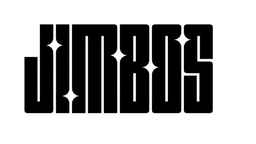How to Do a Paint Correction Step-by-Step
Paint correction is one of the most rewarding detailing services—it can turn a dull, swirled-out car into a mirror finish. But it’s also one of the most misunderstood. In this guide, we’ll walk you through every step of the paint correction process so you can get professional-level results at home or in the shop.
Step 1: Wash and Decontaminate
- Use a high-foaming soap like The Super Soaper to remove loose dirt and grime
- Clay the paint with a clay mitt or bar to remove embedded contaminants
- Use an iron remover if needed for brake dust or fallout
Clean paint = accurate polishing results. Skipping this step risks dragging grit across the surface during correction.
Step 2: Inspect the Paint
- Use strong LED lighting or sunlight to identify swirls, haze, and scratches
- Focus on high-traffic areas—hood, roof, trunk, and door panels
- Check paint thickness if you have a gauge (especially on older vehicles)
Step 3: Do a Test Spot
Always test before committing to the whole vehicle. Try a section with your intended pad and polish combo:
- Moderate defects: Use a medium cut pad and Picture Perfect Polish
- Heavier defects: Start with a compound and heavy cut pad
Adjust your combo based on what removes defects without over-correcting or causing haze.
Step 4: Polish the Vehicle
- Apply 3–4 drops of polish to your pad
- Spread on the panel before starting the machine
- Work in a crosshatch pattern with moderate pressure
- Let the polish break down—don't dry buff
- Wipe clean with a soft microfiber towel like Softer Than Soft Towels
Step 5: Refine If Needed
Some vehicles (especially dark or soft paints) benefit from a finishing step. Use a softer pad and finishing polish to remove haze and boost clarity. If using a one-step like Picture Perfect Polish, you may be able to refine just by switching to a softer pad.
Step 6: Apply Protection
- Wipe the car down with panel prep or IPA
- Apply a ceramic spray like Tough As Shell to lock in your work and add hydrophobic protection
Pro Tip
Don't chase perfection on every job. Sometimes 80–90% correction is all the car (or customer) needs. Focus on balance, consistency, and finish quality—not sanding every defect out.
Final Thoughts
Paint correction is part art, part science—but with the right tools and process, anyone can achieve show-quality results. Take your time, inspect your work as you go, and you’ll be shocked at the transformation.
Shop Picture Perfect Polish | Protect with Tough As Shell



